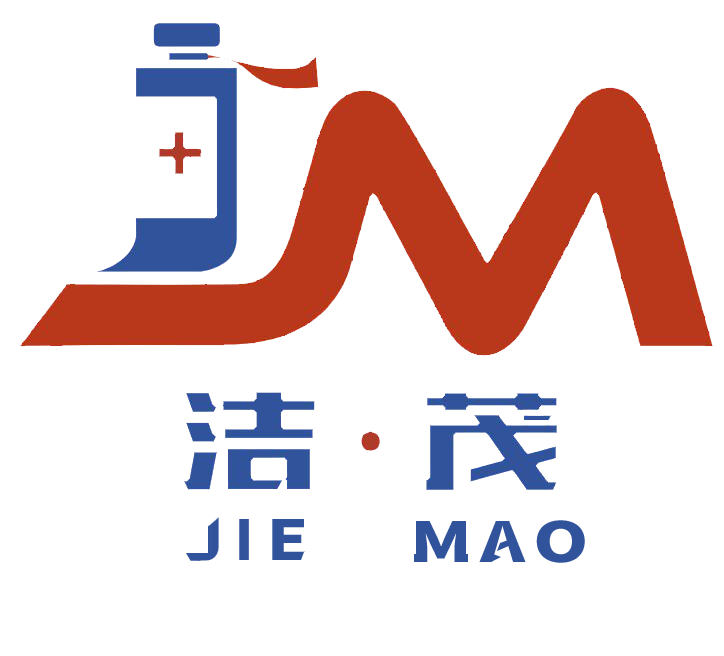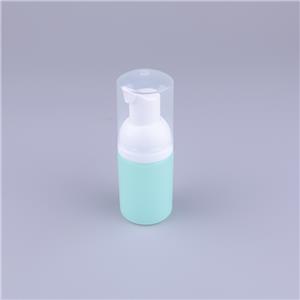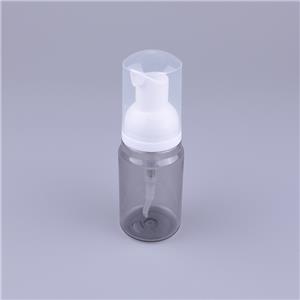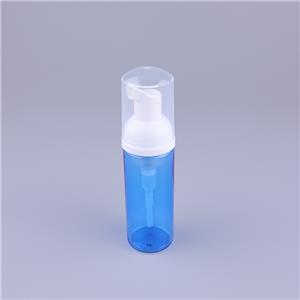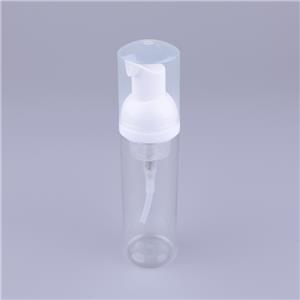- Home
- >
- News
- >
- Public Information
- >
- Plastic bottle injection molding process
Plastic bottle injection molding process
Injection molding process: the core technology of thermoplastic molding
Injection molding process is an efficient molding technology that processes thermoplastic materials into various products through molds. With the advantages of high automation, fast production efficiency, and high product accuracy, it has become one of the most widely used processes in modern plastic processing. From everyday plastic tableware and phone cases to precision automotive parts and medical devices, injection molding technology, with its strong adaptability and flexibility, supports product manufacturing in many industries and occupies an irreplaceable position in materials science and industrial production.
1、 Process principles and core elements
The core principle of injection molding process is the cyclic process of "melting flow forming solidification": solid plastic particles are heated and melted into a flowing dynamic melt, which is injected into a closed mold cavity under pressure. After cooling and solidifying in the cavity, the melt forms a product that is consistent with the shape of the mold cavity. This process needs to be achieved through the synergistic effect of the three core elements of raw materials, injection molding equipment, and molds.
Requirements for raw material characteristics
The injection molding process has specific requirements for the performance of raw materials (thermoplastic), which directly affects the quality and efficiency of molding. Melt flow rate (MFR) is a key indicator that reflects the fluidity of plastic melt. Excessive MFR can lead to large shrinkage and unstable size of the product; If it is too low, the fluidity will be poor, and problems such as material shortage and insufficient filling may occur. It is necessary to choose the appropriate MFR plastic according to the complexity of the product, such as selecting high fluidity PP and ABS for precision parts and high-strength PC and PA for structural parts.
The thermal stability of plastics is equally important. They need to be able to withstand the heating temperature of the material barrel (usually 150-350 ℃) without degradation, otherwise it will cause discoloration and decrease in mechanical properties of the product. Therefore, before processing, it is necessary to confirm the thermal decomposition temperature of the plastic. For example, PVC needs to be added with a heat stabilizer to prevent decomposition. In addition, the shrinkage rate of plastic (the proportion of cooling shrinkage after molding) needs to be matched with the mold design. Different plastics have significant differences in shrinkage rates (such as PE shrinkage rate of 1.5% -3%, PC shrinkage rate of 0.5% -0.7%), and the mold needs to reserve shrinkage allowance to ensure the dimensional accuracy of the product.
Common injection molded plastics include general plastics (PP, PE, ABS, PS), engineering plastics (PC, PA, POM, PBT), and specialty plastics (PEEK, PI), which are suitable for scenarios with different strength, temperature resistance, and chemical resistance requirements.
Composition of injection molding equipment
The injection molding machine is the core equipment of the injection molding process, consisting of four parts: injection system, mold clamping system, hydraulic transmission system, and electrical control system. The injection system is responsible for plastic melting and injection, including hopper, barrel, screw, nozzle: the hopper stores plastic particles, which fall into the barrel by gravity; Wrap a heating ring around the outside of the material cylinder to heat the plastic to a molten state; The screw completes the transportation, compaction, and plasticization (melt mixing) of plastic through rotation and axial movement, and the plasticized melt is injected into the mold through a nozzle.
The mold clamping system realizes the opening, closing, and locking of the mold, consisting of a fixed template, a moving template, a pull rod, and a clamping cylinder. The clamping force needs to match the injection pressure and the projected area of the product to prevent the mold from being stretched open and causing burrs during injection. The formula for calculating the clamping force is: clamping force (kN)=projected area of the product (cm ²) x injection pressure (MPa) x safety factor (1.2-1.5).
The hydraulic transmission system provides power for injection and mold closing, controlling the speed and pressure of each component's movement; The electrical control system (PLC+touch screen) accurately controls process parameters (temperature, pressure, time) to achieve automated production. High end injection molding machines are also equipped with servo motors, with an energy-saving rate of over 30%.
Key points of mold design
The mold is the key to determining the shape and quality of the product, consisting of a cavity, core, pouring system, cooling system, and ejection system. The outer and inner surfaces of the product formed by the cavity and core are mostly made of mold steel (such as P20, 718H), which needs to be quenched and polished to ensure surface smoothness and wear resistance.
The pouring system introduces the molten material from the nozzle into the mold cavity, including the main channel, diversion channel, and sprue: the main channel connects the nozzle and diversion channel, and a taper (2 ° -5 °) needs to be designed for easy demolding; The diversion channel distributes the melt to multiple cavities; The sprue is the final channel for the melt to enter the mold cavity, with a small size (usually 0.5-2mm), which is convenient for cutting the melt and separating the product. Common types of sprues include side sprues, point sprues, and hidden sprues, which need to be selected according to the shape of the product.
The cooling system takes away the heat of the melt through circulating water, accelerating the solidification of the product. The cooling water channel needs to be close to the surface of the mold cavity (15-25mm away) to ensure uniform cooling. The cooling time accounts for 50% -70% of the molding cycle, directly affecting production efficiency. The ejector system (ejector pin, top plate, ejector tube) pushes the product out of the mold after cooling to avoid deformation or scratches.
2、 Process flow and key parameters
The injection molding process is a continuous cycle, and the parameter control of each link directly affects the quality of the product. The complete process includes three stages: raw material preparation, injection molding, and post-processing.
Raw material preparation stage
The raw materials need to undergo pretreatment and drying: pretreatment includes screening (removing impurities) and mixing (adding color masterbatch and additives in proportion) to ensure the uniformity of the raw materials; Drying is aimed at hygroscopic plastics (such as PA, PC, PBT), which are prone to absorbing moisture from the air and may produce defects such as bubbles and silver wires when melted. It is necessary to use a drying machine (hot air drying or dehumidification drying) to reduce the moisture content to below 0.02% -0.05%. The drying parameters vary depending on the plastic (such as PC drying temperature of 120 ℃ for 4-6 hours; Drying temperature of PA6 is 80-90 ℃ for 4 hours.
Injection molding stage
This is the core of the process, which consists of five steps: plasticization, injection, pressure holding, cooling, and mold opening and ejection. Plasticization: The rotation of the screw transports plastic particles forward and melts them under the heating of the barrel and the shearing of the screw, forming a uniform melt. The plasticization quality depends on the barrel temperature, screw speed, and back pressure (back pressure during screw rotation). If the back pressure is too high, it will prolong the plasticization time, and if it is too low, it will result in uneven plasticization.
Injection: The screw moves rapidly forward to inject the melt into the mold cavity at high pressure and speed. The injection pressure is usually 50-150MPa and the speed is 30-150mm/s. It needs to be adjusted according to the thickness and complexity of the product: thin-walled products require high pressure and high speed (to reduce melt cooling), and thick walled products require low pressure and low speed (to prevent overflow).
Pressure holding: After the melt fills the mold cavity, the screw maintains a certain pressure to replenish the material into the cavity, compensating for the cooling shrinkage of the melt. The pressure holding is usually 60% -80% of the injection pressure, and the holding time is determined according to the thickness of the product (thick walled products need to extend the holding time). Insufficient holding can lead to product indentation and smaller size.
Cooling: After the pressure holding is completed, the mold cooling system works to reduce the temperature of the product to below the thermal deformation temperature, allowing it to solidify and shape. The cooling time calculation formula is: cooling time (s)=(maximum wall thickness of the product (mm)) ² × material coefficient, different plastic coefficients are different (such as PE coefficient 0.8, PC coefficient 1.2).
Mold opening and ejection: After cooling is completed, the mold closing system drives the moving template to retreat and open the mold. The ejection system ejects the product from the mold at a slow and uniform speed to prevent deformation or whitening of the product.
Post processing stage
Some products require post-processing to improve performance: removing excess material from the sprue and parting surface by removing burrs; Annealing treatment (such as holding PC products in a 120 ℃ oven for 2 hours) eliminates internal stress and prevents product cracking; Surface treatment (spray painting, electroplating, silk screen printing) enhances appearance and functionality; For food grade products, cleaning and disinfection are required to remove oil stains and impurities.
3、 Quality Control and Common Problems
The quality of injection molded products needs to be controlled from three aspects: appearance, size, and mechanical properties. Common defects need to be solved through parameter optimization during production.
Quality inspection indicators
The appearance quality requirements include no defects such as burrs, missing materials, bubbles, silver wires, shrinkage marks, scratches, etc., which can be achieved through visual or automated visual inspection (with an accuracy of 0.01mm); The dimensional accuracy must comply with the drawing tolerance (such as ± 0.1mm), and key dimensions should be measured using a coordinate measuring instrument or caliper; The mechanical properties (tensile strength, impact strength) must meet the usage requirements, and the performance standards are ensured through sampling and testing of raw materials and finished products.
Common defects and solutions
Defects in production are often caused by parameters or mold problems, and can be adjusted accordingly: burrs (excess material at the edge of the product) need to be increased or decreased due to insufficient mold clamping force or high injection pressure; Insufficient material (cavity not filled) due to poor melt flowability or insufficient injection volume, it is necessary to increase the temperature of the material cylinder, increase the injection pressure, or increase the holding time; Bubbles need to be dried more or the screw speed should be reduced (to reduce air entrapment) due to insufficient drying of raw materials or the inclusion of air in the melt; Shrinkage marks (surface depressions) require increasing the holding pressure or optimizing the cooling water channel due to insufficient pressure or uneven cooling; Warping deformation is caused by excessive internal stress, and it is necessary to reduce the temperature gradient of the mold or adjust the gate position to ensure uniform flow of the melt.
4、 Application Fields and Development Trends
The injection molding process, with its advantages of high efficiency and precision, is widely used in various industries and is upgrading towards intelligence and greenness with technological progress.
Main application areas
The packaging industry is the largest market for injection molding technology, producing bottle caps, containers, turnover boxes, etc. For example, mineral water bottle caps use PP injection molding to ensure sealing through thread forming; The automotive industry uses injection molding to produce interior parts (dashboard, door panels), exterior parts (bumper), and functional parts (connectors), and engineering plastics (PC/ABS alloy) to replace metals for lightweighting; The home appliance industry produces shells (refrigerator drawers, washing machine inner tubes) and structural components (gears, brackets), with ABS becoming the mainstream material due to its easy coloring and moderate strength; The medical industry uses medical grade plastics (PC, PP) injection molding to produce syringes, infusion set casings, and medical device components, requiring clean molds and non-toxic raw materials; The 3C industry produces precision parts such as mobile phone casings, keyboards, connectors, etc., requiring a dimensional tolerance of ± 0.02mm and high-precision injection molding machines and molds.
Technological development trends
Intelligence is the core direction, and injection molding machines are equipped with sensors (pressure, temperature, displacement) and AI algorithms to monitor the molten state and product quality in real time. Through adaptive control, parameters are automatically adjusted to reduce manual intervention, and the scrap rate is reduced to below 0.5%; Industrial Internet enables equipment networking, remote monitoring of production data and energy consumption, and improves management efficiency.
Greening focuses on energy conservation, consumption reduction, and circular utilization, with a servo motor injection molding machine penetration rate of over 80% and a 30% reduction in energy consumption; The injection molding technology for recycled plastics is mature, and through cleaning and modification, recycled PP and ABS can be used for non food contact products; The application of bio based plastics (PLA, PBAT) injection molding is expanding, reducing dependence on fossil resources.
Breakthrough in precision and special molding technology, micro injection molding can produce micro products weighing less than 0.1g (such as medical micro parts) with an accuracy of ± 0.001mm; gas assisted injection molding uses nitrogen injection to make thick walled products hollow, reducing shrinkage marks and weight; Double color/multi-color injection molding for one-time molding of multi material or multi-color products, enhancing the integration of appearance and functionality.
As the core technology of plastic processing, injection molding process reflects the collaborative innovation of materials, equipment, and molds in its development process. From daily necessities to high-end industrial parts, injection molding technology supports the development of modern manufacturing industry with its efficient and flexible characteristics. With the deepening of intelligent and green technology, injection molding process will play a greater role in precision production and resource conservation, promoting the manufacturing industry to move towards high-quality direction.
